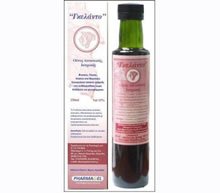
Λεξικό .. New antiasthmatic drugs
There are several novel treatments under development for asthma. It is unlikely that new bronchodilators will improve on inhaled beta-agonists, and new anti-inflammatory therapies would be of more value. Inhaled steroids with greater topical efficacy are currently under development. Identification of the critical actions of inhaled steroids may help to identify more specific therapies with fewer potential side effects. Several mediator antagonists or inhibitors are currently being assessed in asthma therapy.
Leukotriene D4 antagonists look promising as drugs which inhibit allergic bronchoconstriction, but whether they will modulate the underlying inflammatory process is more doubtful. PAF antagonists have been disappointing in both challenge and clinical studies in asthma, but it may be difficult to antagonise the effects of endogenously released PAF.
Cytokines are important in orchestrating asthmatic inflammation, but it may prove difficult to develop cytokine receptor antagonists. Steroids may be effective in asthma by inhibiting the synthesis of several cytokines. T-lymphocytes are important and cytokine secretion from these cells in inhibited by cyclosporin A.
Although it would be too toxic for genral use, inhaled formulation and less toxic immunosuppressants have potential. Inflammatory cell infiltration is dependent on adhesion molecules expressed on endothelial and inflammatory cells. An antibody to ICAM-1 blocks eosinophilic inflitration after allergen in primates and adhesion molecule inhibitors may be a useful development. Neural mechanisms may amplify asthmatic inflammation and tachykinin antagonists may reduce this neurogenic inflamamtion.
Modulation of the allergic response with inhibitors of IgE synthesis, such as IL-4 inhibitors, is an atractive possibility since it would be useful in all allergic diseases [1].
Recent studies in children have shown that written action plans based on symptom recognition are more effective than action plans based on peak expiratory flows. Bronchodilator administration by metered-dose inhaler is becoming the preferred therapy for treating mild-to-moderate asthma exacerbations in the emergency department, but nebulizers may still have a role in home and inpatient asthma management. High-dose inhaled corticosteroids may be as effective as oral corticosteroids for acute asthma exacerbations. A novel treatment strategy has titrated combination therapy with budesonide and formoterol for both maintenance and relief of symptoms. Lastly, the contributions of obesity and genetic variation to severe asthma exacerbations are becoming known, and noninvasive positive pressure ventilation has become an option for patients in severe asthma exacerbations [2].
References
Barnes, P.J.: Innovations in the management of asthma. Symposium, XVth Congress of the EAACI. Paris, May 11, 1992.
2. Schramm CM, Carroll CL. Advances in treating acute asthma exacerbations in children. Curr Opin Pediatr. 2009 Apr 20.
Γκέλης Ν.Δ. - Λεξικό Αλλεργίας - Εκδόσεις ΒΕΛΛΕΡOΦΟΝΤΗΣ - Κόρινθος 2013
Gelis Ν.D. - Dictionary of Allergies - VELLEROFONTIS Publications - Corinth 2013




